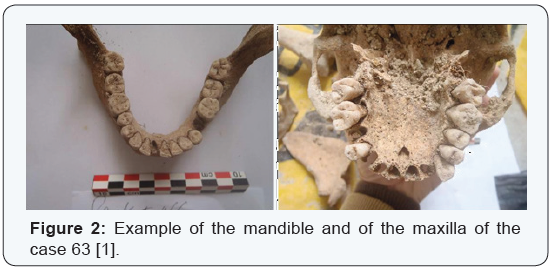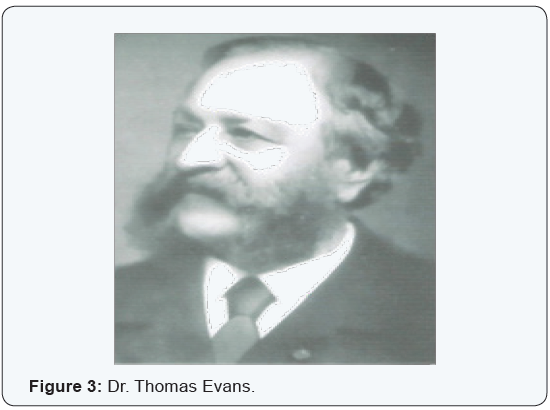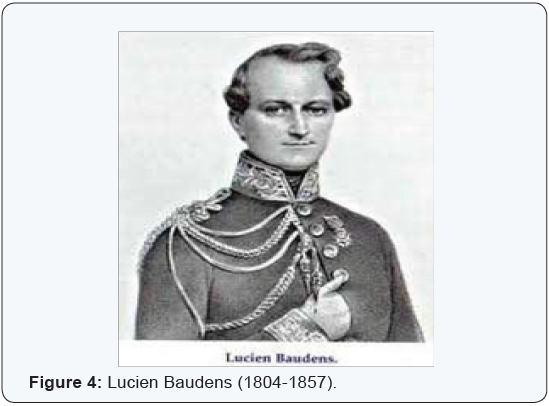Statistical Survey on the Soldiers’ Odontogram of the Crimean War (1853-1856) Found in Sevastopol
Xavier Riaud*
National Academy of Dental Surgery, France
Submission: February 23, 2016; Published: April 27, 2016
*Corresponding author: Xavier Riaud, Dental Surgeon, National Academy of Dental Surgery, France; Email: xavier.riaud@wanadoo.fr
How to cite this article: Xavier R. Statistical Survey on the Soldiers’ Odontogram of the Crimean War (1853-1856) Found in Sevastopol. J Forensic Sci & Criminal Inves. 2016; 1(1): 555555. DOI: 10.19080/JFSCI.2016.01.555555
Abstract
Crimean War, 1853-1856. Recently, a mass grave has been exhumed which contained the bodies of numerous French soldiers who had died during the confrontation. An archaeological mission was immediately launched. As far as dental research was concerned, the mission resulted to a forensic analysis followed by an epidemiological and historical study that yielded the following results.
Objective: producing the odontogram of the jaws which had been removed in the mass grave and carrying out a subsequent dental epidemiological study.
Keywords: Archeology; Crimean war; History; Medicine; Forensic odontology
Material and Equipment
Files of photographs of all the jaws and hardware of color shade- scale and brightness. The study was carried out from photographs rather than from the bone pieces which had not been provided.
Potential sources of error:
- The quality of the photographs (negative effects, troubles with brightness, etc.)
- The photographer’s absent-mindedness who took some photographs of the same jaws several times, therefore suggesting other individuals, whereas they were the same.
- The classification allocated to each picture used by the photographer was never the same and made it more difficult to analyze. The latter labeled the following information on the photographic file to identify the several negative effects on the photography of the same jaw: 54; 54bis; 54ter or 54.1; 54.2; 54.3 or even 54; 55; 56.
Number of people
68 (-2 doubtful cases: 1 case repeated itself and there was a doubt on the maxilla connected to the mandible).
Odontogenic Study
Antemortem missing teeth
132 residual teeth (truncated result, for numerous individuals only had a maxilla or a fragment of maxilla). 132/68 = 1, 94 missing teeth/individual.
Antemortem missing teeth
479 (truncated result, for numerous individuals only had a maxilla or a fragment of maxilla). 479/68 = 7, 04 postmortem missing teeth per individual.
Remaining teeth
401 (truncated result, for numerous individuals only had a maxilla or a fragment of maxilla). 401/68 = 5, 90 remaining teeth per individual. In short, 1 012 foreseeable teeth (401 + 479 + 132); 132/1012 = 13, 04 % of antemortem missing teeth; 479/1012 = 47, 33 % of postmortem missing teeth; 401/1012 = 39, 62 % of remaining teeth.
(Truncated results, for numerous individuals only had a maxilla or a fragment of maxilla).
Study Concerning Bone Pieces:
Number of recovered jaws:/ 72
Individual having 2 jaws
4 cases, that being 5, 88 % of individuals.
Individual having 1 jaw
46 cases, that being 67, 65 % of individuals, that is to say 2 maxilla (8, 33 %) and 44 mandibles (91, 67 %).
Individual only having a fragment of maxilla
18 cases, that being 26, 47 % of individuals.
Observation
- 58 wisdom teeth remained in their sockets;
- 14 teeth sockets of wisdom teeth were visible, those of postmortem missing teeth.
For the cases 7, 22, 24, 26, 35, 36, 38, 40, 42, 58, 64, 69, 73, at least an incisor was missing. At the time, a soldier was exempted if he could not tear up powder cartridges with his teeth which were a necessary condition for the proper functioning of the rifle. If not exempted, he was sent to the navy, the artillery, or he could get involved in the military intendancy.
Pathologies
Cavities
49 (truncated result, for many of the teeth were postmortem missing teeth and numerous individuals only had a maxilla or a fragment of maxilla). 49/68 = 0.72 cavity per individual. Out of 49/401 remaining teeth= 12, 22 % of cavities.
Parodontopathies
56 cases, that being 82, 35 % of individuals who suffered from a parodontal disease (which is not surprising given the lack of dental care, dental hygiene and a diet rich in meat and wine given to the soldiers).
Occlusal abrasions
57 cases, that being 83, 82 % of individuals who grinded their teeth due to bruxism (which is not surprising given the amount of stress created by the soldier’s military condition, especially in the context of military confrontation). 230 teeth were concerned, that is to say 230/401 =57, 36 % of the remaining teeth were abraded.
Dental versions
7 cases, that being 7/68 = 0, 10 % of the individuals who showed a tooth that tilted down an edentulous space.
Accident risk of evolving wisdom teeth:
That being (58+14)/ 1012= 7, 11 % of possible teeth. That being (58+14)/ (401+479) = 8, 18 % of the remaining postmortem teeth and postmortem missing teeth. The risk of having a subsequent infection due to a wisdom tooth compared to the other teeth was therefore of 8, 18 % (Figure 1) [1].

Odontogram of the Case 63
- Maxilla
- Right Left
- 18 17 16 15 14 13 12 11 21 22 23 24 25 26 27 28
- 48 47 46 45 44 43 42 41 31 32 33 34 35 36 37 38
- Right Left
- Mandible
- Caption:
- In italics: empty teeth sockets >> postmortem lost teeth;
- In bold: antemortem missing or lost teeth.
No cavities. Wear facets are noticeable both on the mandible and the maxilla, but especially on the mandible. There is a parodontopathy (more serious on the maxilla than on the mandible) (Figure 2).

What about the Crimean War?
From 1853 to 1856, the Crimean War was a conflict in which Russia lost to an alliance of France, the United Kingdom, the Ottoman Empire, and Sardinia. The longer-term causes involved the decline of the Ottoman Empire and the unwillingness of the United Kingdom and France to allow Russia to gain territory and power at Ottoman expense. The confrontation mainly took place at the Sevastopol naval base on the Crimean peninsula. The Treaty of Paris of 1856 settled the Russian defeat and the end of the war.
History of Dentistry and the Crimean War: Small Study
The armed forces of the Old Continent always recommended to their soldiers to take great care of their teeth [2]. There was a scurvy epidemic during the Sevastopol siege (1854-1855), a pathology that causes a poor state of dental health and a rapid loss of teeth due to melting bones, which resulted from a lack of Vitamin C. Widespread in the body, this disease can be deadly. “Anselme-Eugene Escallier, high alpine grenadier neither saw the Sevastopol siege, nor the Traktir victory. He had resisted to the freezing cold, like all good Champsaurin. His companions had died of cholera. The others had swollen legs, were losing their teeth or were dying of exhaustion. Scurvy wreaked havoc in the ranks of ill nourished soldiers [3].”Pierre Remy, born on December 16 1834, had joined the 13th battalion of infantrymen, on March 31 1855. He then joined the 19th battalion of infantrymen on December 31, 1855. He fought in the Crimean War from July 21, 1855 to May 23, 1856. He was exempted due to his retirement leave on December 31, 1861. For the anecdote, he had brought surgical pliers to extract the soldiers’ teeth from the Crimean campaign [4]. In 1855, Chenu was promoted first class main doctor and joined the French expedition in Crimea [5] (1853-1856). DOUSSIN Jean-Jacques, was born on April 28, 1821, in Gourge (Deux-Sevres). Soldier in the 2nd “Voltigeurs de la Garde”. He was shot to the face on May 23 1855. The bullet penetrated the middle of the right cheek, removed four molars and the corresponding part of the upper maxilla, damaged the tongue and came out behind the angle of the lower left maxilla. Admitted to the hospital of the military practice ground on June 1 - June 26, 1855. BOISSEAU Simon, was born on September 5 1830, in La Rochenard (Deux-Sevres). Soldier in the 2nd Zouaves. Fractured upper jaw; gunshot, on June 7, 1855. Admitted to the Dolma- Bagtche hospital on June 11. Evacuated on July 17. Substantial loss of substance of the lower maxilla. Injury that concerned all the right aveolar edge from the symphysis to the mounting branch. Teeth loss from the upper jaw of the same side, excepting incisors that endured a notable deviation. February 7, 1856. The French soldiers had Pattern 1853 Enfield rifles. The soldiers had to tear the cartridges with their teeth to load their rifles. The lack of upper incisors was a matter of exemption [6]. The Crimean War (1854-1855) had some effect on the American military medical practices during the 1860’s. In 1863, Chisholm published in Richmond his “Manual of Military Surgery”. Designed for the Confederate s, the manual echoed the medical findings made during the previous conflicts. “As for the treatment of gunshot injuries of the face which led to bone fragmentation, the surgeon should always try to preserve and to put the largest number of bone portions back into place. It is often highly surprising to see how such small connections with surrounding soft tissues may be sufficient to maintain vitality and to assist with the restoration of the unity of this area. When a bullet needs to be extracted, whether of course it is possible, it has to be so through the mouth. The location of the injury as well as the application dressing need to be considered very carefully thus ensuring that the patient does not swallow secretions from sores which are generally responsible for fatal irritations or fevers. In the case of secondary haemorrhage coming from the deep branches of this area, it is necessary to bind the main trunk” [7]. From 1859, Pierre Apolloni Preterre (1821-1893), French dentist, became the forerunner of maxillofacial prosthetics. Being one of the greatest prosthetists of the time, from 1860, the ministry for the War put him in charge of equipping the maxillofacial casualties of the wars in Mexico, Italy and Crimea and of 1870 [8]. “His devices attracted the professional public’s admiration”. He kept a collection of the moulds of devices he made for the casualties in his dental office. Nowadays, some of these items can be seen in the Val-de-Grace museum. Thomas W. Evans (1823-1897) (Figure 3), Napoleon III’s American dentist, went to Moscow and visited the hospitals. He was aghast to find such precarious living and treatment conditions. He was outraged by the slowness of treatments and did not hesitate to treat French and Russian soldiers wounded in Sevastopol. During the Crimean War, chloroform anesthesia was greatly used in the French army. It allowed to eradicate the pain and to regularize the wounds. On July 25, 1855, Jean-Baptiste-Lucien Baudens (Figure 4) became the health service inspector of Corsica, Italy and of the Eastern army. After the siege of Sevastopol, at the end of September 1855, he was in charge of inspecting the hospitals. While visiting those of Constantinople, he was surprised to meet French soldiers coming back from Crimea who were suffering from scurvy. His report concluded to precarious facilities, but which were maintained with the greatest hygiene. According to him, chloroform was used 30,000 times, without the slightest accident [9].


Conclusion
At the end of the 19th century, there were no dentists in the military campaigns and dental hygiene was inexistent. There was neither dental service in the army. They only appeared in 1916. When there was some dental care, it was carried out in a precarious and rudimentary context and most of the time, it was limited to dental extractions. The Brouardel law officially gave the dentists a status. The soldiers with missing upper incisors were exempted or those who were not, were transferred to the artillery. However, in terms of command, this problem had caused great difficulties among the officers. During World War I, Bourgeois, a military dentist, studied soldiers of a land regime which was near the front lines during 22 months and soldiers of an active division during 8 months. He presented the results to the Inter-Allied Dental Congress. He noticed that “a diet too rich in meat, added to sedentary conditions which prevented from having hygienic care” were among the reasons which caused serious digestive disorders and oral pathologies. In the first case of study, the soldiers suffered from the multiplication of gingivitis and periodontitis that resulted to scaling and numerous extractions, which then led them to dental implant clinics. In the second case, the young soldiers from 20 to 30 years old were struck by an upsurge of fast-paced tooth decay generally causing pulpitis and disabling dental abscesses. He eventually noted that: “Three men from a land company who had received rational nutrition mainly made up of fresh vegetables were sent to dental implant clinics for a longer period than the three soldiers coming from a neighboring company whose diet was ill-prepared and mainly made up of meat.” Bourgeois implied that a healthy diet unquestionably affected the periods of post-extraction healing. In both cases, when their dentures were severely altered or degraded, the oldest soldiers who were fitted usually crowded the hospitals due to gastro-intestinal problems. Moreover, even a temporary lack of dentures caused phonetic disorders and affected soldiers in command. After the review of the study I had done on the French soldiers’ jaws who had died during the Crimean Warn, the noted statistics are even more understandable, considering Bourgeois’s study that he had carried out during World War I.
References
- Georges Patrice (2015) Personal communication, INRAP, Montauban, France.
- Adams Georges W (1996) Doctors in Blue, the Medical History of the Union Army in the Civil War, Louisiana State University Press, Baton Rouge, pp. 17, 216.
- Serge Billard (2012) The Crimean War: Anselm Eugene Escallier. Billiards-Baltyde Generations.
- Sabot Thierry (2001) The Crimean War (1853-1856) Histoire- Genealogie.
- Chenu JC (1865) Report to the Army Health Council for the results of the medical and surgical service of the Crimea ambulances and of French military hospitals in Turkey, during the East campaign in 1854- 1856.
- From coal and ether (2013) Long guns.
- Riaud Xavier (2006) The Influence of American dentists during the Civil War (1861-1865). In: L’Harmattan (ed.), Medicine throughout the centuries Collection, Paris.
- Lamendin Henri (2006) Small accounts on the dental art of yesterday and today. In: L Harmattan (ed.), Collection Ethique medicale, Paris.
- Zimmer Marguerite (2008) History of Anaesthesia: methods and techniques in the nineteenth century, EDP Sciences, Les Ulis, France.







